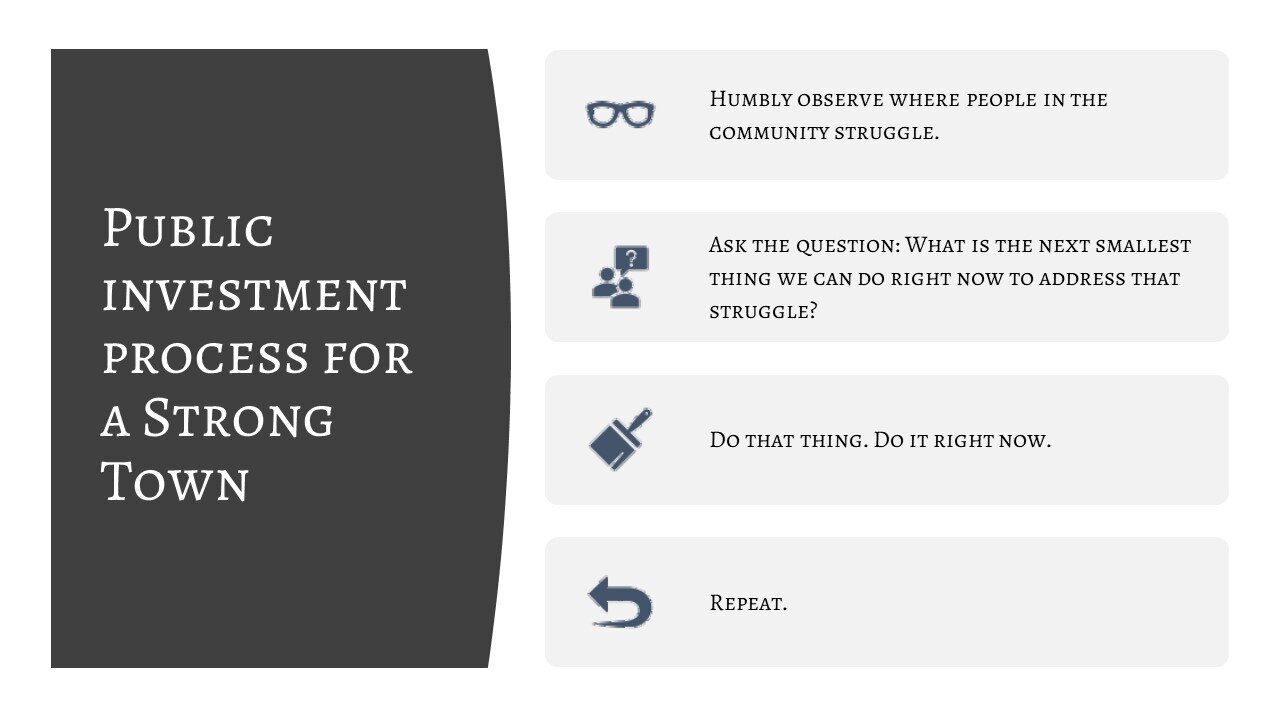SUPPLEMENTAL MATERIALS
Chapter 5: Great Streets
Key Quotes
“Having a wealthy city does not mean having a city of wealthy people. In fact, the highest wealth-producing places in the United States today are often where some of the poorest people live.” — Click to Tweet
“Building a city that values transactions, within a macro economy that prioritizes the velocity of money, at best discounts the poor. At worst, it exploits them, inflicting great harm on vulnerable communities of people.” — Click to Tweet
“...the best financial investments that cities can make are small and, in the present configuration of American cities, almost always in our poorest neighborhoods.” — Click to Tweet
“Not only are small investments in poor neighborhoods the lowest-risk, highest-returning way for a community to build wealth, but they are also the best way to lift a neighborhood out of decline without displacing the people who live there.” — Click to Tweet
“Density is never the cause of financial productivity, but it is sometimes the result.” — Click to Tweet
“...as Jane Jacobs suggests, our neighborhoods must be a co-creation. By disciplining ourselves to act incrementally and iteratively, we allow people — our friends and neighbors living in the neighborhood — to react to the change and then demonstrate to us, through their actions, where the next struggle is.” — Click to Tweet
“Building a great street is more of an art than a science.” — Click to Tweet
“...proper street design cannot be standardized across a city, let alone a state or a continent. Building a wealth-producing street is a nuanced and localized undertaking, one requiring an intimate understanding of a place.” — Click to Tweet
“We will not build great streets, places that produce wealth and improve quality of life, by allowing people to comment on three variations of a bad design.” — Click to Tweet
“I support Complete Streets as a rational response to a despotic transportation system, but let us be clear about the difference between a Complete Streets approach and a Strong Towns approach. Complete Streets accommodate pedestrians and an auto-dominated realm. Strong Towns accommodate automobiles in an environment dominated by people.” — Click to Tweet
Building Wealth
From a Strong Towns lens, the best investments are measured in hard currency. Invest a dollar and get back a dollar plus a real return on that investment. This is fundamental economics — the kind that genuinely builds wealth over time. Here are two classic Strong Towns case studies:
The Cost of Auto Orientation
Brainerd, Minnesota. Read the analysis here.
Your City's Wealth Isn't Where You Think
Lafayette, Louisiana. Read the analysis here.














